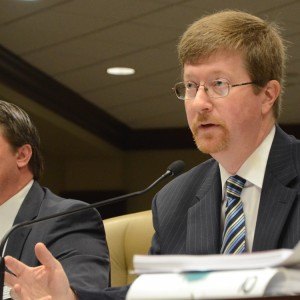Legislators accept recommendation for 1% public school funding increase
by March 9, 2016 5:04 pm 497 views

Total funding for public education would increase by less than 1% in fiscal year 2016-17 under a recommendation accepted by the legislative Joint Budget Committee during a pre-fiscal session meeting Wednesday (March 9).
The recommendation by the executive branch and the legislative adequacy committee is to spend $2.987 billion on K-12 public schools for fiscal year 2016-17, compared to the $2.944 billion authorized in fiscal year 2015-16. Legislators will vote to fund public education and other state agencies during a fiscal session that begins April 13. They do not have to follow the recommendation.
However, they likely will not stray far.
That’s because state funding for school districts is determined by a process that occurs every two years. An adequacy committee composed of members of the House and Senate Education Committees spends much of a year trying to ensure enough money is spent to avoid the state running afoul of the Supreme Court’s Lake View decision requiring all students to receive an adequate and equitable education.

The funding for this year’s budget came about as a result of adequacy committee meetings that ended in the fall of 2014 for the two-year biennium. Education Commissioner Johnny Key told legislators the increase will be enough to fulfill the state’s “adequacy” requirement.
Legislators Wednesday accepted the recommendation but removed one line item from the final request: $250,000 spent on home school testing that was made unnecessary by a 2015 law ending the testing.
Prior to the vote, Gov. Asa Hutchinson (R) had requested about $900,000 in additional funding for teachers who participate in the National Board of Professional Teaching Standards program; for additional money for “panic buttons,” which is a phone app school districts use in emergencies; and for a STEM (science, technology, engineering, math) pilot program. Legislators accepted those additions.
The largest public school funding increase would come in state foundation funding, the primary school funding mechanism. It is based on the district’s average daily membership. Under the recommendation, that amount increases by $43.754 million to $2.053 billion.
The state also would increase funding to districts based on the number of students receiving free and reduced price lunches under the National School Lunch Act. That state money, meant to address achievement gaps among lower-income students but which is spent by districts in a variety of areas, would increase by $11 million to $235.5 million. Funds for teacher retirement would increase by $1.073 million to $11.8 million under the recommendation.
